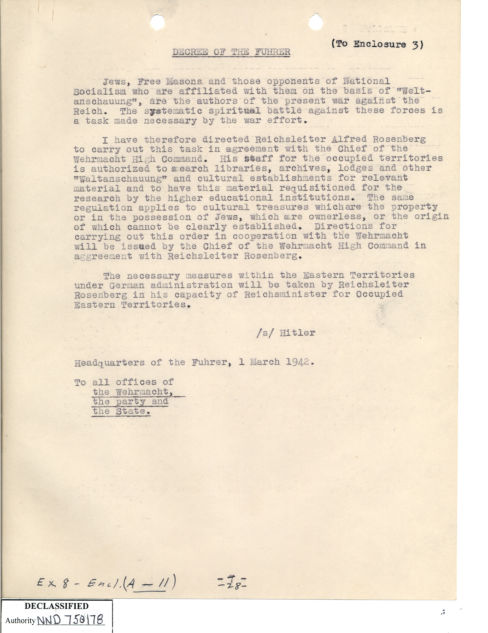Alexander Makushin, Co-Chair of the East-Patriotic Foundation, Co-Chair of the Clio community of historians, Expert at the Russian Military Historical Society (RMHS), describes how the property of “enemies of the Reich” was seized.
When the Nazi state was established, various measures were introduced to eliminate “enemies of the Reich” who were nationally, politically, or “spiritually” opposed to Hitler’s ideology. The decree was in effect not only in Germany but also in the occupied territories. Stealing the property of “enemies” funded the Nazis and lined the pockets of their top brass.
The Reichsleiter Rosenberg Taskforce (German: Einsatzstab Reichsleiter Rosenberg or ERR) was formed in 1940 to search, catalogue, and appropriate properties and seize cultural treasures. Several works of art from personal collections and national museums in the occupied countries were seized and taken to the new Führermuseum (European Museum of Art) in Linz. Some of the works were officially purchased by Nazi leaders (Hitler, Göring, etc.), but at massive discounts.
Interesting fact: Adolf Hitler technically had no income other than royalties for his book Mein Kampf.
The decree stipulated that the Wehrmacht had to assist the work of the Einsatzstab and Einsatzgruppen in the Occupied Eastern Territories, which assessed cultural goods and Jewish property. The Wehrmacht’s High Command was tasked with devising procedures for cooperation between the Wehrmacht units and Einsatzgruppen.
The International Military Tribunal at Nuremberg admitted used the evidence to charge the Nazis with misanthropy.
By Ekaterina Chernetskaya
























